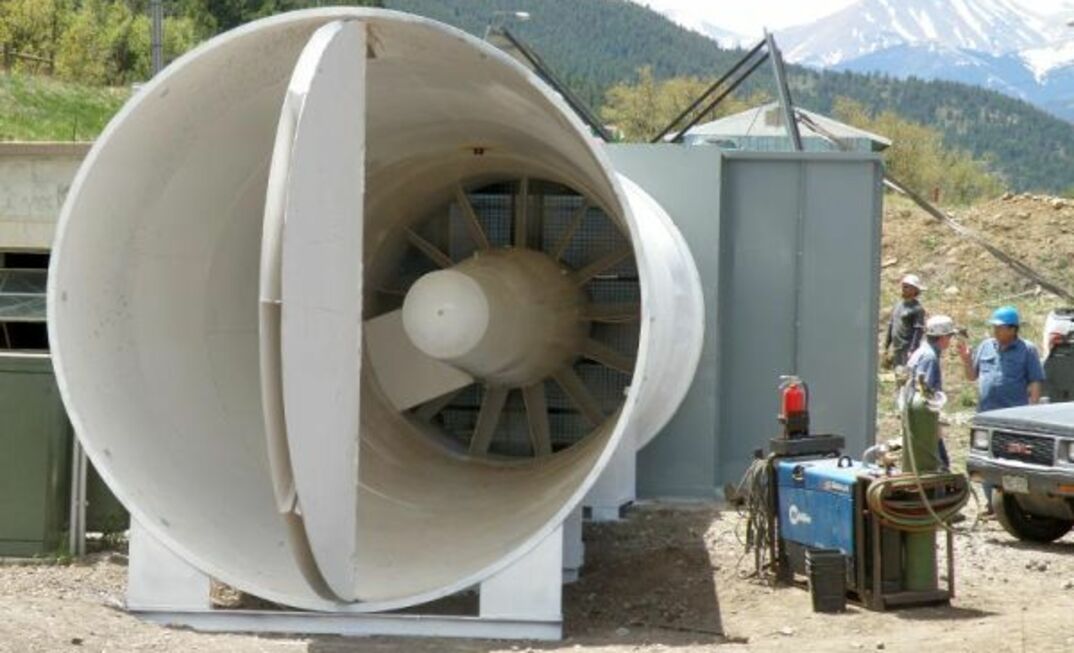Archaeological inspection of the airflow passages in ancient Greek mines reveals that the critical importance of underground ventilation is hardly a new discovery.
Yet millennia later, this unglamorously functional aspect of mining remains stubbornly under-addressed.
Taking shortcuts and going skinny during the design process are the norm.
Even though it may be the one operational component which directly impacts every underground worker for every second of their shift, extra investment in this area is a tough sell.
Mine Ventilation Australia director Derrick Brake told MiningNews.net that many of the most typical ventilation pitfalls trace back to planning decisions during the feasibility and development stages.
“Unrealistically optimistic assumptions are really what it boils down to,” he said.
“That’s the biggest underlying problem.”
Brake says mine managers juggling the many moving parts of a modern mine tend to suffer from short-term focus – which can lead to neglect of evolving ventilation needs.
“People don’t see ventilation as value adding,” he said.
“If you talk about buying another truck or loader, they see it as having some sort of return whereas many managers just see ventilation as just being a cost.
“It’s a cost to be minimised rather than looking at what is a robust ventilation system that is going to support the operation.”
If this support is properly premeditated and regularly updated, it translates into important operational flexibility, reducing constraints on mine operators as they navigate a unique and changing natural environment.
Brake recommends having a ventilation system reviewed once a year, at least.
But the performance benefits of investing in ventilation improvements will always remain secondary to safety and health considerations.
Historically, mine ventilation has developed in large part as a means of mitigating the risk of fire.
But while the industry’s natural evolution toward smarter electrical systems and the end of the use of wooden supports has curbed this threat substantially, more insidious dangers remain.
Poor air quality underground can kill workers slowly through occupational diseases, especially when they’re exposed to diesel exhaust.
Emissions from diesel engines include carbon monoxide, nitrous fumes and diesel particulate matter (DPM), which contains invisible and sometimes odourless soot and aerosols.
This issue could be particularly challenging in the metalliferous space.
“In coal mines they generally have a pretty sound understanding of flammable mixtures,” Brake said.
“I think the issues of dust and DPM and heat stress are less well understood in hard rock mines.
“In hard rock mines, the guys who are entrusted with designing and running the ventilation system are usually junior engineers who have little if any experience and often have no mentoring on site.”
This issue is compounded by a lack of recent traction in technological developments within ventilation.
There are emerging technologies out there but no consensus yet as to how big an impact they’re going to have.
Many of these advancements included focus on lowering respiratory risk through cleaner engines and low-sulphur fuels, but the so-called “ventilation on demand” concept aims to improve overall performance through a more economic approach.
Demand-controlled ventilation essentially changes the airflow underground in real time, according to whether there is an immediate need.
In theory, an operator allocates air to the right places only when miners are working there.
The basic technology has been around for decades, but getting the sensors and operational details down pat has been tricky.
“I can certainly be done, the question is, can it be maintained, is it reliable enough and can it actually add value to the operation,” Brake said.
“People ask me about it and I say we put men on the moon back in 1969, how difficult is ventilation on demand compared to that?
“But few of the mines that have tried it have persevered with it, mainly because it’s just proved difficult to maintain.”
The promise of demand-controlled ventilation, however, may not lie in mustering the can-do spirit of the 1969 moon shot. Instead, the method could find its success in the fact that it directly addresses ventilation from a cost-saving angle.
As electrical tariffs go up and miners get hit with more carbon taxes, the focus on lower energy costs through techniques such as demand-controlled ventilation may be just what it takes to help miners breathe a little easier.
























